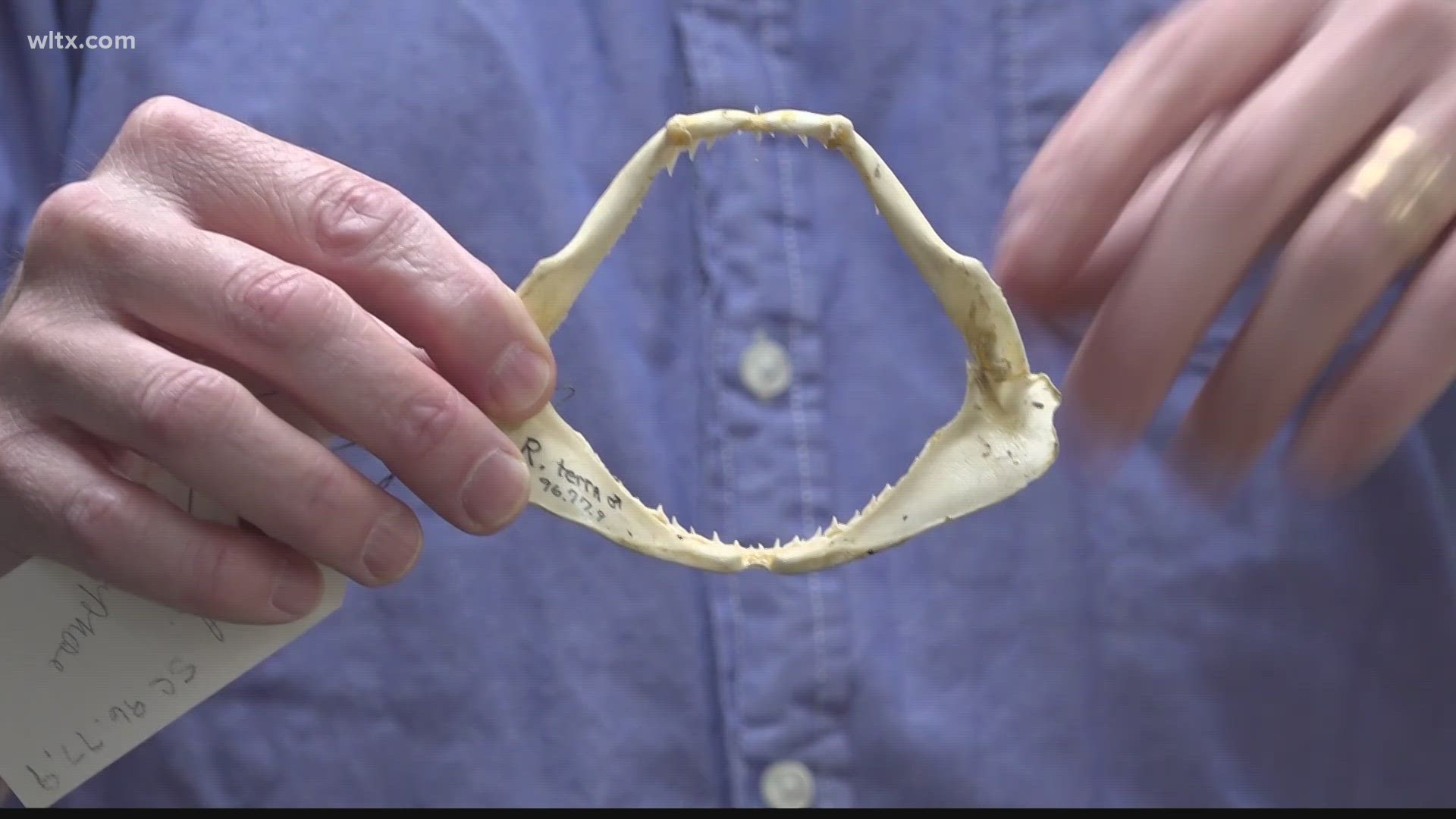COLUMBIA, South Carolina — It is not uncommon to find a shark tooth along the South Carolina coast. Dave Cicimurri said that’s because sharks replace their teeth almost every week.
Cicimurri is the South Carolina State Museum's curator of natural history.
“Each one of the teeth will fall out and be replaced every week. One shark can shed 20,000-30,000 in its lifetime," he said.
Cicimurri along with a team of scientists examined several Atlantic sharpnose shark jaws to understand how they changed and adapted.
“The Atlantic population isn’t behaving exactly the same. Atlantic sharpnose sharks are getting bigger, ” Cicimurri said.
Sharks play a critical role in the food chain and in maintaining the balance of our oceans. Understanding how their jaws have evolved and adapted can help us understand how to better protect these important species.
The study also focused on shark teeth. Tooth shape is one way that scientists can determine what the sharks are eating and how they are eating the prey.
“The serrated teeth help the adult sharks catch and process the fish," Cicimurri said. "The younger sharks have smooth-edge pointy teeth. That helps them grab and hold onto the shrimp or crabs that they are eating.”
Cicimurri also noted that understanding how sharks' teeth change over time can help scientists predict how they may adapt in the future.
“We’re not just guessing and creating new species because we think that each tooth shape is a different kind of shark," he said.
The newly released study is set to help scientists better understand the millions of fossilized shark teeth.

